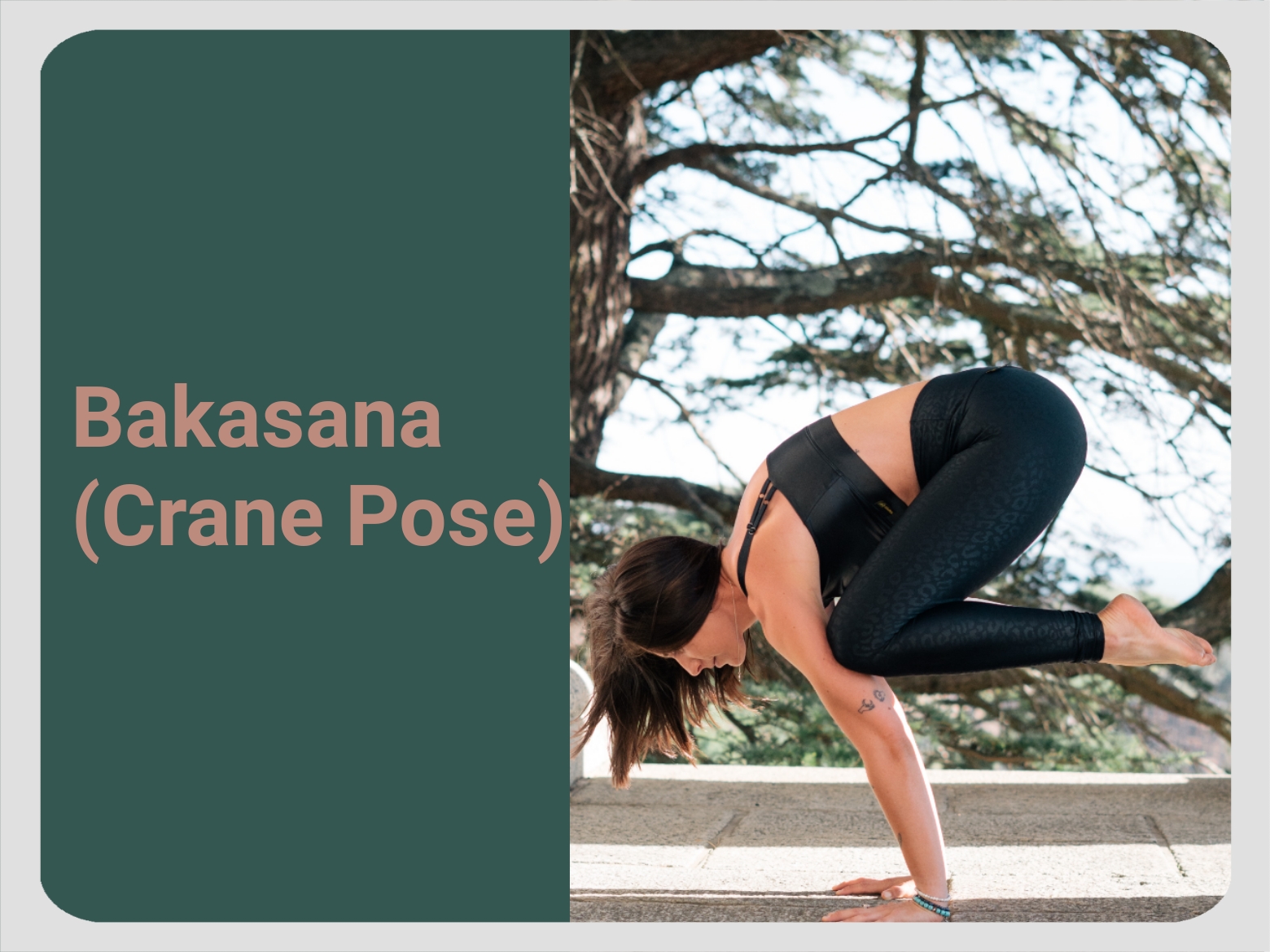Bakasana (Crane Pose)
Bakasana is a type of yoga asana which is also commonly known as “Crane pose”. In this asana, you have to stand on the hands and support the weight of the feet, thereby forming the tree pose. It helps in improving physical strength, balance, and attention skills. The final posture of the body in this asana resembles that of a heron, hence the name.
This asana is taken as an advanced class and balance asana. Its regular practice increases your concentration. Bakasana is a balancing yoga pose in which you balance your body with the help of your arms.

How to do it?
(1) Stand straight, keep a little distance between the feet.
(2) Now bending your knees, bend down and place your palms on the ground.
(3) Keep a distance of one foot between the palms, open the fingers.
(4) Now flexing the elbows, bend the knees on the arms near the armpits.
(5) Now, by contracting the muscles of the legs, bring the legs close to the body.
(6) Contract the muscles of the pelvis and buttocks and feel lightness in the legs.
(7) Balance the weight of the body by moving your buttocks back and forth so that the arms do not have difficulty in taking the body weight.
(8) To maintain balance, pay attention to whatever point is coming in front of the eyes in the middle of the palms, and try to equalize the breath. By making the breath even and calm, the body starts to become stable and feels light.
(9) If both the legs are not able to be lifted together, first keep one leg on the arm and then the other.
(10) Avoid touching the ground with your nose. Keep the chin raised upwards.
(11) When the body comes in balance, then try to straighten the arms even more and raise the head higher.
(12) Do this posture for 5 seconds. Make breathing normal.
(13) In the end, slowly bring the feet towards the ground. And finish the asana.
(14) To reduce the tension of the wrists, rotate them. Stand up, close your eyes and feel the flow of energy in your arms, shoulders, chest and pelvis.
Benefits of Bakasana (Crane Pose)
1.) Strengthens the arms and wrists: Gives strength to the arms, wrists and hands. When the body-weight comes on the hands instead of the feet, the energy is reversed.
2.) Strengthens the abdominal muscles: This asana strengthens the abdominal muscles and improves the digestion process.
3.) Strengthens the muscles of the waist: Performing Bakasana strengthens the muscles of the waist, which improves the structure of the waist.
4.) Improves self-control: Performing Bakasana improves your mental control, which brings peace to the soul and increases mental stability.
5.) Improves Body Composition: This asana improves your body composition, which increases body stability and excels in routine.
6.) Strengthens the trachea: Performing Bakasana strengthens your trachea which helps in covering your breath better.
7.) Improves body balance: Performing Bakasana strengthens your body balance, giving you more stability.
8.) Help towards a healthy life: Performing Bakasana improves your physical and mental health, thereby leading you towards a healthy and positive life.
How long should you hold Bakasana?
The duration for holding Bakasana (Crow Pose) can vary depending on your level of practice and strength. For beginners, holding the pose for a few breaths, around 5 to 10 seconds, can be a good starting point. As you become more comfortable and gain strength, you can gradually increase the duration to 30 seconds or even a minute.
Precautions of Bakasana (Crane Pose)
Don’t let there be any setback in any action. In the beginning, abhyasis can keep blanket etc. in front of their face, so that the face does not get hurt. If there is injury in the wrists, arms etc., then do not do this asana.
Warm-up: Before doing the asana, warm-up the whole body, so that it is prepared for the synthetic physical activity.
Care of the back and lower muscles: Take care of the condition of the back and lower muscles, so that there is no tension in your back and waist.
Make the pace of breathing: Maintain the pace of breath properly while doing the asana and breathe well without straining.
Follow the position: Stay in the correct position during the asana and do not exert much tension, so that your body does not get hurt.
Time Limit: Do the asana for a limited time and when your body gets tired, let it rest.
Frequently Asked Questions
What are the benefits of Bakasana?
Bakasana, also known as Crow Pose, has several benefits, such as strengthening the arms, wrists, and core muscles. It also improves balance, concentration, and overall body awareness. Additionally, Bakasana can help to tone the abdominal organs and improve digestion.
How do you do Bakasana?
Start in a squat position with your feet slightly apart and your palms placed on the mat shoulder-width apart in front of you. Bend your elbows slightly and bring your knees high up onto the backs of your upper arms, close to the armpits. Shift your weight forward onto your hands, engaging your core muscles to lift your feet off the ground. Keep your gaze focused slightly forward.
Who should avoid Bakasana?
If any injury to the hips, knees, wrists, or shoulders, then it is best to avoid the practice of Bakasana or Crane Pose. Modifying this pose with props or support is the best option.
Read Alao
- Shalbhasana (Locust Pose)- Benefits & Steps
- HastaPadasana (Standing Forward Bend)
- Benefits of Padmasana (Lotus Pose) and How to Do it (precautions)
- Parvatasana (Mountain Pose) Benefits & Steps
- Ustrasana (Camel Pose)- Benefits, Steps & Precautions